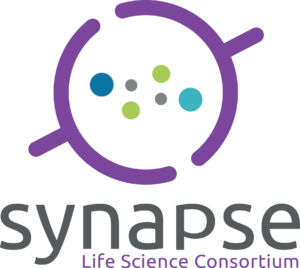Aug-2022
Startups need cash, time, and connections
Alex Muggah has seen hundreds of life sciences and healthtech companies work to commercialize their innovations.
If new healthcare innovations don’t integrate with existing systems, there is little to no chance of mass adoption.
As Director of the Synapse Life Science Consortium, a partnership of public- and private-sector institutions in Hamilton, Ontario and administrator of SOPHIE life sciences commercialization grants, Muggah likens his job to that of a concierge: connecting high-potential startups to funding, infrastructure, and relevant partners to enable the commercialization of health innovation.
A lot of fantastic innovations find their origins in lab environments, but a working experiment doesn’t easily translate to a commercialized product. Speaking with BetaKit, Muggah shared some common hurdles that life sciences startups face as they move from functioning ideas to marketable products.
Has this been tested?
Lab environments offer total control over the smallest details. Unfortunately, the real world offers no such protections. As a result, lab-developed innovations need to be designed to handle real-world human and environmental factors that don’t naturally occur in controlled environments.
Unfortunately, testing in real-world environments can be an expensive process. Further, a typical startup often doesn’t have the clout or network to access testing facilities, which can halt commercialization efforts altogether. This is where the SOPHIE program can help, said Muggah, because it builds and maintains long-term relationships with laboratory infrastructure and clinical expertise and makes introductions to startups as needed.
Muggah shared the example of Allarta Life Sciences, a Hamilton-based company building an encapsulation technology to enable the delivery of cell-based therapies. Allarta’s solution has been proven out in mice with great effect. However, the cost and complication of finding and securing facilities for larger animal testing (and eventually onto humans) can be extensive. Leveraging the SOPHIE program funding and network, Allarta was able to access the required facilities and expertise at McMaster University, ensuring the project could maintain its momentum.
Addressing user error
Testing on mice is one thing. In order to successfully commercialize their technology, startups must also understand how care providers and patients will interact with (and possibly incorrectly use) their technology.
Muggah noted that it was critical for startups to test ease of use, intuitiveness, and whether the product contains enough clinical impact to be adopted. It’s also important to test how patients respond, both to the intent of the product and to its use in general, so practitioners can assess whether it’s helpful in a patient care scenario.
Because of the multiple stakeholders involved, from patients to administration, testing in hospital and healthcare environments is notoriously difficult. To ensure patient protection and worker comfort, several steps are required just to get an introduction, let alone make a pitch, to test in a large hospital.
It’s a process Muggah said NERv Technology is going through right now. The Waterloo-based company has developed a pocket-sized device to help practitioners monitor for postoperative complications. The SOPHIE program leveraged its connection with Hamilton Health Sciences to make an introduction for NERv. As a result of the new partnership, NERv was able to test its product for efficacy, integrations with existing postoperative devices, and patient care responses.
Technological interoperability
From a commercialization standpoint, technological integration is an important step for life sciences startups before their product is market ready. Muggah said that if new healthcare innovations don’t integrate with existing systems, there is little to no chance of mass adoption.
Similar to other commercialization hurdles, getting access to an organization’s network to test integrations is a challenge. In this case, it’s due to security risks and possible damage to the network, which would severely harm patient care. SOPHIE helps startups navigate this by connecting with organizations like Mohawk College’s mHealth & eHealth Development and Innovation Centre (MEDIC) to access expertise and knowledge to perform system integration and interoperability testing.
Cash and intros get the wheel turning
Understanding the common commercialization hurdles mentioned above is one thing, but having the funding and the time to navigate through them is another. This is where Muggah feels SOPHIE shines: for its funding, neutrality, and speed.
Muggah said that because the program operates through the Innovation Factory and works with four of Hamilton’s anchor institutions who are part of the Synapse Consortium (i.e., Hamilton Health Sciences, McMaster University, Mohawk College’s mHealth & eHealth Development and Innovation Centre (MEDIC), and St. Joseph’s Healthcare, Hamilton), it can help a broader range of startups than if it were embedded in any one institution, and associated institutes and research centres. If the program were embedded inside a hospital, for instance, it might be too focused on hospital-specific use cases rather than an overall health or life sciences problem. Because of SOPHIE’s neutrality, it can accept any Ontario-registered life sciences startup working on commercializing hardware or software.
Muggah also claimed that SOPHIE can get these types of projects stood up in a month or two, whereas they can often take over a year without outside support. He added that this kind of program is perfect in Hamilton because the city has large healthcare and life sciences infrastructure already: more than 200 life science organizations call Hamilton home, with more set to come following the announcement of McMaster Innovation Park’s $1.75 billion innovation hub that will be anchored by tenants like the Centre for Commercialization of Regenerative Medicine (CCRM), plus thousands of doctors and nurses working in two of the country’s largest research hospitals.
“The activity and energy coming out of SOPHIE and Synapse is a symptom of the transformation and the orientation of the Hamilton community toward supporting commercialization of health innovation,” said Muggah.
Read the full BetaKit article here
